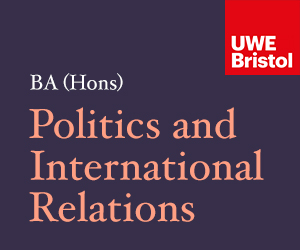Of Food Aid and Altruism – The Human Security Paradigm in Theory and Practice
Fifteen years after its first official promulgation, the human security paradigm requires analysis and evaluation, particularly in respect to its implications for the politics of international food aid.
Chinese Nuclear Policy in the Post-Cold War Age
Chinese nuclear policy serves their grand strategy aimed at maintaining a calm international strategic environment. China’s nuclear policy is inherently defensive and, excluding proliferation concerns, practically benign. However, one should remember that this does not mean it isn’t based on self-interest.
One Person’s Terrorist… Another Person’s Freedom Fighter?
This work will point out that although maybe not wholly applicable, the truism that ‘one person’s terrorist is another person’s freedom fighter’ is useful in some respect, as it draws attention to important issues that have to be considered when attempting to define the concept of terrorism.
Is Security “Civilising”, as Argued by Loader and Walker?
Loader and Walker reveal a very interesting dynamic, in which they put citizens in a position to somehow educate the state, to secure themselves and avoid the state developing as a threat to them. However, I would say that they do not develop this notion far enough, and are subsequently unable to overcome the concept of the state as the main actor of security.
Transnational Crime and Canadian Criminal Intelligence
Crime in the 21st century poses a major asymmetric threat to Canadian society, demanding enforcement that is flexible, responsive, and grounded in defensible strategic goals. This will require solutions beyond standard bureaucratic shifts, necessitating a broad change in organizational mindsets, shifting the emphasis of enforcement from a “statistics-based policing” model to a more strategic, long-term approach.
Nuclear Disarmament: The Case Against
As US President Barack Obama outlined his ambitious vision of a world without nuclear weapons, this essay proposes to analyse whether nuclear disarmament is indeed a more serious policy option today than at the dawn of the atomic age in 1945 or at the height of the Cuban missile crisis in 1962.
Private Military & Security Companies and the Pursuit of Legitimacy
Junio Valerio Palomba provides an alternative insight on the nature of private military and security companies and their activities. Specifically, he demonstrates how recent changes in the organization and structure of the market for force – such as the disappearance of combat operations – can be interpreted and explained through the theoretical lens of legitimacy.
Public War, Private Soldiers
On September 16, 2007, the issue of private military firms exploded out of the dry confines of academic debate and into the public consciousness as bright, bloody pictures blanketed the newspapers and television networks that had long ignored the subject. Seventeen Iraqis had been violently killed and more than twenty others wounded while they went about their business in Nisour Square, in the heart of Baghdad’s once fashionable Mansour District.
Strategic Partnership or Contending Coalitions? An Analysis of EU-NATO Relations
Fundamental problems, both structural and political, continue to characterise the EU-NATO relationship as one of ‘contending coalitions’. Yet, recent shifts in the attitudes of major actors coupled with success in simultaneous operations suggest there is potential for a ‘strategic partnership’ to emerge.
Pursuing Peace with the Weapons of War: Ballistic Missile Defence and International Security
This paper will show that the implementation of ballistic missile defence systems is a threat to international peace and security. It will examine of the concept of ballistic missile defence, the cases for and against its implementation and the current realities that are of consideration and its role in international peace and security.



